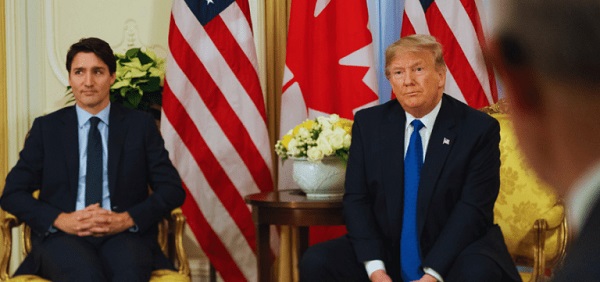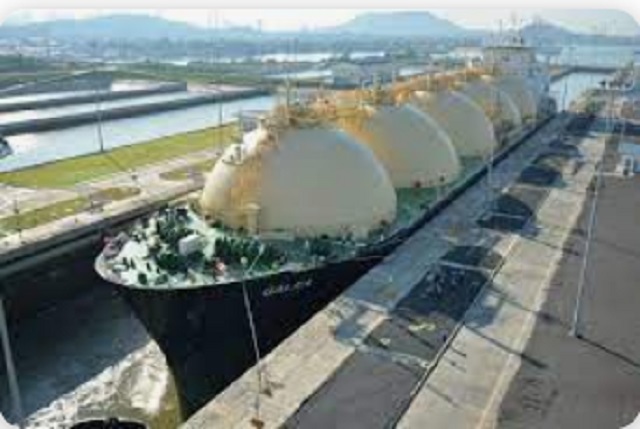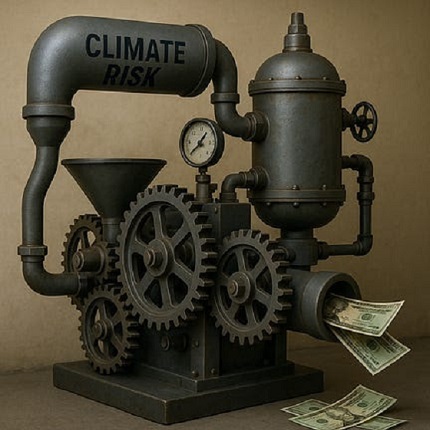Business
Canada needs to get serious about securing its border

From the Macdonald Laurier Institute
By Todd Hataley for Inside Policy
US President-elect Donald Trump has made clear his intention to call out Canada on weak enforcement on migration, money laundering, and the cross-border trafficking of narcotics, especially fentanyl.
Until just very recently, Canada has remained largely silent on these issues. Security agencies, such as the Royal Canadian Mounted Police (RCMP), Ontario Provincial Police (OPP), Sûreté du Québec (SQ) and the Canada Border Services Agency (CBSA), have tried to secure the border via memorandums of understanding, framework agreements, and legislated agreements that allow them to share information and even work together.
However, resources are limited for cross-border law enforcement co-operation. CBSA remains understaffed and RCMP Integrated Border Enforcement Teams (which work with US security agencies) have limited geographic reach, leaving much of the enforcement between ports of entry left to police of jurisdiction, who already are hard pressed to provide services to the communities they serve.
The Canadian government’s apparent strategy of largely ignoring the problem is becoming more difficult to maintain. With the United States Border Patrol intercepting increasing numbers of illegal migrants crossing into that country from Canada, it’s clear the porous border is a concern. Exacerbating the situation is the recent discovery of illegal narcotic super labs in Canada – where production far outstrips the market – and Canada’s unfortunate, albeit well-deserved reputation as a haven for global money launderers.
Thanks to Trump’s 25 per cent tariff threat, the crisis is now endangering Canada’s relationship with its largest and most-important trading partner. This announcement sent all sectors of government and the private sector into a frenzy, prompting Prime Minister Justin Trudeau to fly to Florida to seek out an early audience with Trump at his Mar-a-lago resort home. Trudeau’s team spun the trip as proof that the federal government is serious about working with the US to address its border security and public safety concerns.
But with political crises piling up, it will be difficult for Trudeau to also manage the political optics of kowtowing to Trump, who is widely unpopular among Canadians. Spending extra money to appease Trump during the ongoing housing, immigration, and health care crises could make the Trudeau’s popularity nosedive even further. Adding insult to injury, Trump is essentially demanding that Canada do America’s work by stopping illicit goods and people from entering the United States: customs and border security officials generally work on the principle of stopping goods from entering their country.
Trudeau faces many practical challenges, including the need to ramp up the number of border and law enforcement agents who have the skill sets and training required to police offences such as drug production, money laundering, and the cross-border smuggling of goods and humans. Purchasing helicopters and drones to conduct surveillance will do little to aid enforcement, since most goods smuggled across the border pass through legitimate border crossings. RCMP Commissioner Mike Duheme even suggested putting RCMP cadets along the border – a challenging proposition since vast swathes of the border are either wilderness or water. Surveillance is one thing, but the act of enforcement takes skilled people with the capacity to investigate, gather evidence, and articulate that evidence into something that can be used by the courts for convictions. These concerns are not being addressed in this current frenzy to spend money on border security.
There is also good evidence that fortifying the border, or what has become known as forward deployment along the border, does nothing to stop the cross-border transit of contraband goods and people. One need only look as far as the United States-Mexico border to see the failure of forward deployment.
As authorities increase border enforcement activities, the costs of smuggling goods and people mounts for criminals. Eventually, it drives out amateurs, leaving only the professional, skilled, and well-equipped criminal groups. This, in turn, often leads to increasing levels of violence along the border, making interdiction and disruption far more difficult for law enforcement agencies.
Canada has several clear options to address Trump’s border concerns. It can increase the staffing of frontline CBSA officers, including border agents, inland enforcement units that actively investigate and remove individuals from Canada, international liaison officers, and customs processing staff. It can also create a plan for CBSA to take over enforcement between ports of entry. Currently, CBSA enforces entry into Canada at the ports of entry and the RCMP are responsible for the areas in between. Having a single agency manage the border builds capacity and expertise, avoiding inter-bureaucracy competition and confusion.
Canada can also work to better integrate law enforcement, intelligence units, and border services at all levels of government and across international boundaries. Cross-border crime operations are often planned and execute far from the border.
Some of this already takes place, as noted above, but it needs to go much deeper and be more supportive at both institutional and individual levels. This process must also include private sector stakeholders: companies such as FedEx, UPS, and Amazon, as well as freight forwarders, trucking companies, and customs brokers, are all involved in cross-border trade. Their participation as partners in reducing cross-border criminal activity is essential.
Finally, the government needs to designate laws specific to cross-border crime and include meaningful penalties as a means of deterrence.
Hyper-focusing on the border while ignoring other aspects of cross-border crime may be good political optics, but it is a bad strategy. What we really need is functional enforcement – including an integrated process extended vertically and horizontally across all sectors of border stakeholders, at and away from the border, supported by strong policy and legislation. This is the path forward to better cross-border crime enforcement.
Dr. Todd Hataley is a professor in the School of Justice and Community Development at Fleming College. A retired member of the Royal Canadian Mounted Police, he worked as an investigator in organized crime, national security, cross-border crime, and extra-territorial torture. He is a contributor to the Macdonald-Laurier Institute.
Local Business
Red Deer Downtown Business Association to Wind Down Operations

The Downtown Business Association (DBA) Board of Directors has made the decision to wind down the Association’s operations at the end of 2025.
The Board determined that the Association is no longer able to operate sustainably under the financial framework available for 2026. After exploring all reasonable alternatives, the Board concluded that it could not continue without reducing services to a level that would no longer provide meaningful value to levy-paying businesses.
The DBA does not receive any operating funding from City Hall in a regular year, all funds raised are through Business Improvement Area Levy that consists of a mandatory levy placed on all businesses operating within the Business Improvement Area. These funds are legislated under the Municipal
Government Act, to be used to promote the Business Improvement Area, which is achieved through marketing and event initiatives along with providing advocacy support primarily to local government on behalf of the business community.
In recent years, the DBA has been a committed advocate for re-examining the approach to Downtown Governance. The Board has consistently maintained that the responsibility for funding downtown initiatives in such a socially charged environment should not rest solely with the business community.
Despite their efforts, the DBA recognized that the funds generated through the Business Improvement Area Levy were insufficient to effectively address the growing challenges of the current operating environment. This ongoing financial strain highlighted the need for a more equitable and sustainable
model to re-establish the downtown as a safe and welcoming heart of the city.
At the annual DBA budget presentation to City Hall, the DBA requested the essential funding needed to implement the Greater Downtown Governance Committee’s recommendations — work that the DBA is uniquely positioned to lead and has been delivering despite depleting resources for many years. The request was not approved. Instead, The City offered a one-time $100,000 Grant-in-Lieu, paired with a proposed 60% increase to the Business Improvement Area levy in 2026.
After careful analysis, the Board concluded that increasing the levy would place undue strain on already challenged businesses and compromise the DBA’s role as a trusted advocate. Operating with the reduced funding of $225,000 would require further staff reductions in an already under resourced environment and a significant reduction in programs, making it impossible to deliver the level of support that downtown businesses deserve and vitally need.
Beginning January 1, 2026, the City of Red Deer will become the primary contact point for matters previously supported by the DBA, including downtown support programs, business-district coordination, events, safety and cleanliness support, and stakeholder engagement. The DBA will work with City staff to support a smooth transition.
The DBA will continue to provide Clean Team services through the delivery of the City-funded environmental contract until February 1st, 2026.
Quote from CEO, Amanda Gould:
“To our business community, we have always operated with your best interests in our heart, continually driving the vision of a thriving downtown environment that serves every member of our community. The changes ahead will have a significant impact on downtown, as there will no longer be an organization dedicated to ensuring the downtown remains top-of-mind, leading events, marketing initiatives, or advocating on your behalf. It is likely you will experience less coordinated support and collective representation.
After 13 years of service to you and our beautiful downtown, it is with great personal sadness that we find ourselves here, but our message remains clear – addressing the unique challenges of our downtown should not rest solely on your shoulders. We cannot, in good faith, collect a levy that does not enable us to provide the essential services needed for our evolving downtown landscape”.
Quote from DBA Board Chair, Brandon Bouchard:
“The incredible staff at the Downtown Business Association have consistently delivered on their mandate with outstanding dedication and effectiveness. Through their efforts, they have successfully promoted the downtown area, organized impactful marketing and event initiatives, and provided steadfast
advocacy support for the business community. Their work has extended well beyond the legislated requirements, as they have proactively responded to the evolving needs of downtown businesses, adapting to challenges and supporting operations within a complex and changing environment.
Despite the staff’s relentless commitment to positioning the DBA as an effective leader for downtown interests, the absence of a sustainable funding model has made it impossible to continue delivering meaningful support. The Board cannot, in good conscience, propose a levy that does not enable the
Association to meet the required level of service, address the shifting priorities of the business community, or respond to the continually evolving needs of the downtown”.
Agriculture
Growing Alberta’s fresh food future

A new program funded by the Sustainable Canadian Agricultural Partnership will accelerate expansion in Alberta greenhouses and vertical farms.
Albertans want to keep their hard-earned money in the province and support producers by choosing locally grown, high-quality produce. The new three-year, $10-milllion Growing Greenhouses program aims to stimulate industry growth and provide fresh fruit and vegetables to Albertans throughout the year.
“Everything our ministry does is about ensuring Albertans have secure access to safe, high-quality food. We are continually working to build resilience and sustainability into our food production systems, increase opportunities for producers and processors, create jobs and feed Albertans. This new program will fund technologies that increase food production and improve energy efficiency.”
“Through this investment, we’re supporting Alberta’s growers and ensuring Canadians have access to fresh, locally-grown fruits and vegetables on grocery shelves year-round. This program strengthens local communities, drives innovation, and creates new opportunities for agricultural entrepreneurs, reinforcing Canada’s food system and economy.”
The Growing Greenhouses program supports the controlled environment agriculture sector with new construction or expansion improvements to existing greenhouses and vertical farms that produce food at a commercial scale. It also aligns with Alberta’s Buy Local initiative launched this year as consumers will be able to purchase more local produce all year-round.
The program was created in alignment with the needs identified by the greenhouse sector, with a goal to reduce seasonal import reliance entering fall, which increases fruit and vegetable prices.
“This program is a game-changer for Alberta’s greenhouse sector. By investing in expansion and innovation, we can grow more fresh produce year-round, reduce reliance on imports, and strengthen food security for Albertans. Our growers are ready to meet the demand with sustainable, locally grown vegetables and fruits, and this support ensures we can do so while creating new jobs and opportunities in communities across the province. We are very grateful to the Governments of Canada and Alberta for this investment in our sector and for working collaboratively with us.”
Sustainable Canadian Agricultural Partnership (Sustainable CAP)
Sustainable CAP is a five-year, $3.5-billion investment by federal, provincial and territorial governments to strengthen competitiveness, innovation and resiliency in Canada’s agriculture, agri-food and agri-based products sector. This includes $1 billion in federal programs and activities and $2.5 billion that is cost-shared 60 per cent federally and 40 per cent provincially/territorially for programs that are designed and delivered by provinces and territories.
Quick facts
- Alberta’s greenhouse sector ranks fourth in Canada:
- 195 greenhouses produce $145 million in produce and 60 per cent of them operate year-round.
- Greenhouse food production is growing by 6.2 per cent annually.
- Alberta imports $349 million in fresh produce annually.
- The program supports sector growth by investing in renewable and efficient energy systems, advanced lighting systems, energy-saving construction, and automation and robotics systems.
Related information
-

 Business1 day ago
Business1 day agoCanada Can Finally Profit From LNG If Ottawa Stops Dragging Its Feet
-

 Business2 days ago
Business2 days agoThe Climate-Risk Industrial Complex and the Manufactured Insurance Crisis
-

 Health2 days ago
Health2 days agoThe Data That Doesn’t Exist
-

 Crime2 days ago
Crime2 days agoInside the Fortified Sinaloa-Linked Compound Canada Still Can’t Seize After 12 Years of Legal War
-

 National1 day ago
National1 day agoLiberal bill “targets Christians” by removing religious exemption in hate-speech law
-

 Automotive9 hours ago
Automotive9 hours agoThe $50 Billion Question: EVs Never Delivered What Ottawa Promised
-

 Energy1 day ago
Energy1 day agoLNG NOW! Canada must act fast to prosper in changing times
-

 Health22 hours ago
Health22 hours agoUS podcaster Glenn Beck extends a lifeline to a Saskatchewan woman waiting for MAiD







